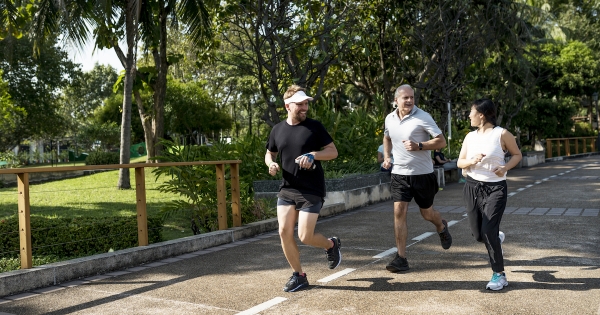
it is estimated that at least 11 million ch fulfilled would be affected by multimorbidity, including hypertension, Dyslipidemia, diabetes, smoking and obesity, urging health professionals to develop skills that allow counteracting this scenario. Why specialists in Kinesiology and speech of the Catholic University have sought to incorporate practical skills to improve the prevention and recovery of patients with heart and vascular accidents.
According to the latest national survey of health (ENS), Chile shows a high prevalence of Cardiovascular risk factors and a high level of morbidity from chronic diseases. Some examples of high prevalence rates are: Hypertension (27.6%), Dyslipidemia, HDL (46%), obesity (34.4%), diabetes mellitus (12.3%), smoking (33.4%), excessive consumption of salt (98%), low consumption of fruits and vegetables (85%), sedentary time free (87%). Of these cardiovascular risk factors, smoking only achieves a reduction, the rest remains or increases in relation to ENS 2010; raising the likelihood of heart attacks and survivors of acute events.
Cardiovascular damage in arterial walls, is slow and evolutionary a process throughout life. Already in early ages as the second decade of life, it is possible to detect initial plates showing the damage, associate usually to poor eating habits and sedentary lifestyle, consumption of tobacco, alcohol, and drugs, such as cocaine. Coronary artery disease shows their first symptoms reach 40 or 50 years in men and 60 years for women.
Diseases of the circulatory system affect both men and women, still 1.5 times higher in men than women ischemic heart disease and stroke in women. However this should not confuse us, women also have a high risk of dying from coronary heart disease or heart disease.
Claudia Román, kinesiologist and head of the diploma in integrative Cardiovascular Kinesiology UC, asserts that physical activity, exercise, and therapeutic exercise are very powerful and effective tool against diseases of vascular risk. “Part of the current work of the physiotherapist is a proper cardiovascular assessment, in order to identify the present Kinesiology problems, as well as the prescription of exercise most suitable according to the clinical features and” each person’s own contextual needs”, points out.
Physical therapy is indicated not only to prevent diseases of vascular risk, but also to prevent the recurrence of an event as it could be a re-infarction or a new vascular accident. The physiotherapists specialized in the area must be able to assess the level of risk of each patient, and intervene as early as possible, even in very acute stages in people hospitalized or ambulatory in control after a cardiovascular event or infarction.
“Physical and therapeutic dosed and monitored in some patients, exercise is a very powerful tool both for prevention and for the treatment of cardiovascular disease in general. There are some studies showing that exercise may also reduce the damage and the condition of inflammation of the endothelium, i.e. of the wall of the artery,”said Roman.
Yolanda Castro, speech therapist and head of the diploma in rehabilitation speech of the neurological adult patient UC, says that thanks to the interdisciplinary look of the patient with cardiovascular damage or risk it is possible to integrate strategies, given that this pictures often impacts the language and cognition, speaks, feeding and swallowing, being imperative need to work jointly and in equipment.
In general, the treatment includes occupational therapy, Kinesiology, nutrition, speech therapy and psychology, being of great importance the focus from community-based rehabilitation”, the specialist added.
Detect signs and early signs of cognitive and communicative commitment is something that Castro suggests to strengthen clinical spaces and their specialists. These slight changes may be associated with disorders of speech and comprehension, either from the phonetic, such as when people start to experience difficulties to name things (anomia), even deeper changes at the discursive level and understanding.
In addition, “people with commitment to cardiovascular disease, see affected his speech and ability to feed themselves, what is known as dysphagia, therefore the importance of detecting in time and eventually intervene with specialized support, preventing the physical, cognitive and social deterioration of the patient”, ends Castro.
"El reclamo puede ser genuino, pero construido sobre una mentira", apuntó el presidente Javier Milei…
El gobernador de la provincia de Buenos Aires, Axel Kicillof, encabezó un acto en Ensenada…
El diputado nacional de La Libertad Avanza, José Luis Espert, expresó su confianza en la…
Tras la masiva reaparición de Cristina Fernández de Kirchner, el presidente Javier Milei apuntó contra…
El principal propósito de la nueva comisión es evaluar los recursos humanos en el Senado,…
En una medida que busca redefinir las condiciones de los seguros de automóviles en Argentina,…
Esta web usa cookies.